 Assistant District Attorney Matthew Bogdanos has been head of Manhattan’s Antiquities Trafficking Unit (ATU) since 2018. He has understood since at least 2011 – and probably earlier – that claims of a multi-billion dollar market in looted and trafficked antiquities have no basis in fact. This is evident from the opinion piece he wrote for CNN[1], published on July 7, 2011. In that piece he wrote:
Assistant District Attorney Matthew Bogdanos has been head of Manhattan’s Antiquities Trafficking Unit (ATU) since 2018. He has understood since at least 2011 – and probably earlier – that claims of a multi-billion dollar market in looted and trafficked antiquities have no basis in fact. This is evident from the opinion piece he wrote for CNN[1], published on July 7, 2011. In that piece he wrote:
“One of the main problems with looting is that if a site is undiscovered, you simply don’t know what you don’t know. Interpol estimates that the illicit antiquities trade is worth billions of dollars. My question is: How do they know that?
“If it is illegal and, therefore, a clandestine trade, how do you know the dollar amount? It is similar to the drugs trade, you guess from the amount you’re able to seize. It is not a scientific approach, nor one I am comfortable using in assessing the total value of the worldwide trade in illegal antiquities.” Matthew Bogdanos, CNN
These two paragraphs additionally confirm that Bogdanos is guessing when he associates the scale and importance of antiquities trafficking with that of drugs and weapons. He even tells us that that is exactly what he is doing and that he is not comfortable with it.
If, as he argues, that Interpol – and so anyone else – cannot possibly know the value of the illicit market, it is a logical consequence that they also cannot claim that it is of equal standing in scale and scope to markets in trafficked drugs or weapons. These are simply false claims about antiquities.
FURTHER EVIDENCE TO SHOW CLAIMS ARE FALSE
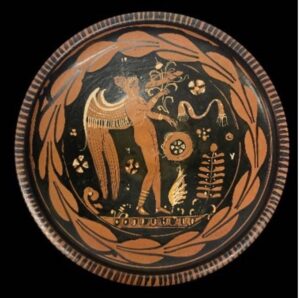
Apulian plate. Dating to 350 B.C.E., features the winged-god, Eros. The plate was allegedly smuggled out of Italy by Giovanni Franco Becchina. Courtesy Manhattan District Attorney’s Office.
Little has changed regarding such data since 2011, except that since 2015, the World Customs Organization (WCO) has produced annual Illicit Trade Reports[2] assessing the size and comparative extent of risk categories, including cultural heritage. Those reports include information registered via the Customs Enforcement Network (CEN) and so are not comprehensive. However, the figures for cultural heritage, of which antiquities form a miniscule part, are so small compared with other risk categories, including drugs, counterfeit goods, tax evasion and weapons, that it is clear there is no similarity at all in scale or scope between drugs and weapons trafficking, on the one hand, and antiquities trafficking on the other.
Further, the 2020 RAND Corporation report[3], an independent study into open source data on the issue by what is arguably the United States’ most trusted research organization, concluded that available evidence showed that a multi-billion dollar illicit global market in antiquities was simply unsustainable:
“Simply put, while we cannot claim to measure the size of the illicit market, we can show that observable market channels are too small to act as conduits for a billion-dollar-a-year illicit trade.”[4]
That report also concluded that what had become widespread claims of the trade in illicit antiquities being linked to those in drugs and weapons could be traced back to Bogdanos as the original source.[5]
Twelve years on from publicly declaring that the multi-billion-dollar claim had no basis in fact, and that the link to drugs and weapons claim was pure guesswork, we find that the Manhattan District Attorney’s office is still promoting the first claim in its media releases.
FALSE CLAIM REPEATED MORE THAN ONCE IN RECENT MEDIA RELEASES
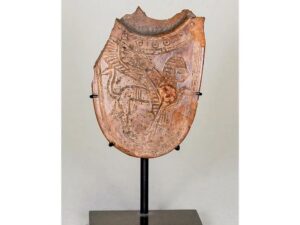
Cosmetic spoon, Artefact returned to the Palestinian Authority by the Manhattan D.A. Image courtesy Manhattan District Attorney’s Office.
On March 21, 2023, under the headline D.A, Bragg Returns 29 Antiquities to Greece,[6] the official media release from the D.A.’s office included the following statement: “Antiquities trafficking is a multi-billion-dollar business with looters and smugglers turning a profit at the expense of cultural heritage…”. The speaker was Special Agent in Charge for HSI New York Ivan J. Arvelo.
The same quote from Arvelo had been included in the D.A.’s earlier official media release on January 5, 2023,[7] regarding the return of an artefact to the Palestinian authority. It is not clear whether Arvelo made his comment during the ceremony at Bethlehem, when Bogdanos was standing next to him, or afterwards, but it remained uncorrected in both releases.
It is hard to believe that in such a sensitive area of crime fighting official releases from the District Attorney’s office would not be scrutinized and signed off by its leading officer prior to release. If Bogdanos is not screening official releases, it raises the question as to why not. If he is, why is he not correcting what at best can be called misinformation that he is well aware of prior to their issue, or at least doing so once they have been released?
He has long known about how controversial and false these claims about antiquities are and, as in his 2011 opinion piece for CNN, expressed his discomfort with their use. Such oversight is crucial to the ATU’s credibility.
If we cannot rely on the D.A.’s office to issue accurate information relating to this highly sensitive area, how can we have confidence in the rest of what it has to tell us on this subject?
IT’S TIME FOR SOME TRANSPARENCY FROM THE MANHATTAN D.A.’S OFFICE OVER ANTIQUITIES
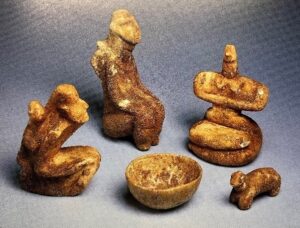
Neolithic family group, Courtesy Manhattan District Attorney’s Office.
Three recent developments have raised questions once again about the activities of the Manhattan District Attorney’s office and its antiquities unit. Separately they are of concern; together they demand some clear answers.
The first involves the claim that 19 items returned to Italy as “illicit” were worth $19 million. The figures simply didn’t add up according to expert valuers from the Antiquities Dealers’ Association, who noted that the South Italian plate included was worth up to about $7,000 at auction, but “only if it were to have a good provenance”.
When asked by Antiques Trade Gazette how the unit had arrived at the valuation, the D.A.’s office replied: “We have experts assess the objects at the time of each repatriation based on the legal definition of value under the law.”
Who these experts are and how they arrived at such an overblown valuation remains a mystery.
This matters because:
- What appears to be a gross exaggeration of value feeds into the inaccurate narrative of a huge international illicit trade in artefacts.
- It also boosts the public standing of the antiquities unit, which in turn makes its unquestioned position all the more unassailable at a time when serious questions regarding its activities need to be asked.
- The unit’s activities are funded from the public purse, so the public is entitled to accurate reporting and transparency.
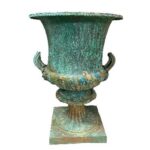
Calyc-krater, Courtesy Manhattan District Attorney’s Office.
If the above is an accurate assessment of the situation, it raises a raft of new questions.
One of those questions involves the second development: the D.A.’s publishing of a media release[8] that led to inaccurate reporting on the criminal status of individuals.
Having unequivocally labelled a number of named individuals as “major antiquities traffickers” in the opening paragraph, an unheralded footnote states: “The charges referenced within are merely allegations, and the individuals are presumed innocent unless and until proven guilty.”
The failure to annotate the body of the release with a reference to the footnote inevitably risks misreporting, especially by those who fail to read to the end of the release. An internet search has revealed at least two examples[9] of this happening in this case. Why is this not of serious concern to the Manhattan D.A.?
CLEVELAND MUSEUM OF ARTS SUES THE D.A. OVER STATUE SEIZURE
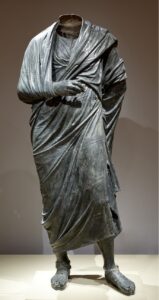
The Philosopher, bronze, Hellenistic Greek or Roman, circa 150 BCE to 200 CE, Cleveland Museum of Art.
One of the most significant developments has come at the hands of the Cleveland Museum of Arts, which is now suing the D.A.’s office over its seizure of a headless ancient bronze statue valued at $20 million.
The D.A.’s office argues that it is of Marcus Aurelius and was looted from Turkey. The museum, which acquired the statue in 1986, says that is not the case.
As the court papers reveal, Turkey made vague and unsubstantiated claims regarding the statue around 15 years ago but did not respond when asked for evidence to support its case and did not pursue the matter further until now.
As the statue had been widely exhibited and written about over the years, Turkey had had a long time to press its case but did not do so. This was also the case when Turkey failed in its claim over the Guennol Stargazer in the New York courts. Among other comments in 2021, U.S. District Judge Alison Nathan noted that Turkey had known of the piece for years and had had ample opportunity to make a claim but had failed to do so in a timely manner.
The Cleveland Museum of Art’s court papers[10] highlight the controversial approach of the Manhattan District Attorney’s office in seizing objects and returning them to source countries: “For more than ten years, the New York County (Manhattan) District Attorney has conducted numerous investigations of antiquities allegedly stolen from foreign nations, returning many of them to those nations. Proof that these items are “stolen” typically is established using the laws of such nations (“patrimony laws”), which, among other things, declare that items of a certain age or type belong to the nation. If a covered object is then illegally exported after the effective date of the patrimony law, the argument is made that it is stolen property.
“Unlike typical criminal investigations, the New York District Attorney’s primary purpose appears to be to return antiquities to their countries of origin or modern discovery, assuming the office can verify the appropriate country.”
The court papers also note that when such returns are made, the media report the returns as involving “looted antiquities” – evidence of any such looting, if it exists, is rarely made clear.
As Art Dealer Association chairman Joanna van der Lande wrote to the Antiques Trade Gazette in the wake of the $19 million claim: “It’s time that the media challenged official bodies, from the Manhattan D.A.’s office to UNESCO, the European Commission, Europol and others, and subject them to the same level of scrutiny that they apply to the market rather than just accepting what they put out in statements. Let’s have the same transparency and due diligence when it comes to ‘facts’ that these bodies so readily demand of dealers and auction houses in relation to objects.”
[1] Matthew Bogdanos, Opinion: Illegal antiquities trade funds terrorism, CNN July 7, 2011.
[2] The World Customs Organization Releases the Illicit Trade Report 2022, 22 June 2023.
[3] Sargent, Matthew, James V. Marrone, Alexandra T. Evans, Bilyana Lilly, Erik Nemeth, and Stephen Dalzell, Tracking and Disrupting the Illicit Antiquities Trade with Open Source Data. Homeland Security Operational Analysis Center operated by the RAND Corporation, 2020. Also available in print form.
[4] See Measuring the international trade in antiquities, Id. at 70 and Issues with the Current Approach for Assessing the Antiquities Market to Terrorist Funding, Id. at 12, and Summary, Id. at 84-85 and Findings, Id. at xii.
[5] See Antiquities Trafficking Using Telegram, Id. at 49-50.
[6] Manhattan District Attorney’s Office, D.A, Bragg Returns 29 Antiquities to Greece, March 21, 2023.
[7] Manhattan District Attorney’s Office, D.A. Bragg Returns Stolen Antiquity to The Palestinian Authority, January 5, 2023,
[8] Manhattan District Attorney’s Office, D.A. Bragg Announces Return of 19 Antiquities to Italy, October 10, 2023.
[9] Artdependence, Manhattan D.A. Returns 19 Antiquities to Italy, October 11, 2023,
[10] Cleveland Museum of Art vs. Alvin Bragg, Case: 1:23-cv-02048-CEF, Complaint, Doc #: 1 Filed: 10/19/23,
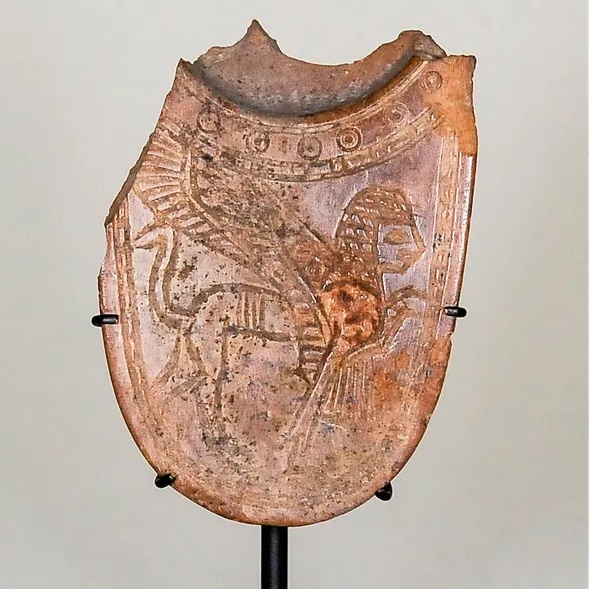 Cosmetic spoon, Artefact returned to the Palestinian Authority by the Manhattan D.A., Purchased by Michael Steinhart in 2003, said to be looted from the Khirbet al-Koum area in Hebron. Steinhart surrendered 180 objects in December 2021. Image courtesy Manhattan District Attorney’s Office.
Cosmetic spoon, Artefact returned to the Palestinian Authority by the Manhattan D.A., Purchased by Michael Steinhart in 2003, said to be looted from the Khirbet al-Koum area in Hebron. Steinhart surrendered 180 objects in December 2021. Image courtesy Manhattan District Attorney’s Office. 

